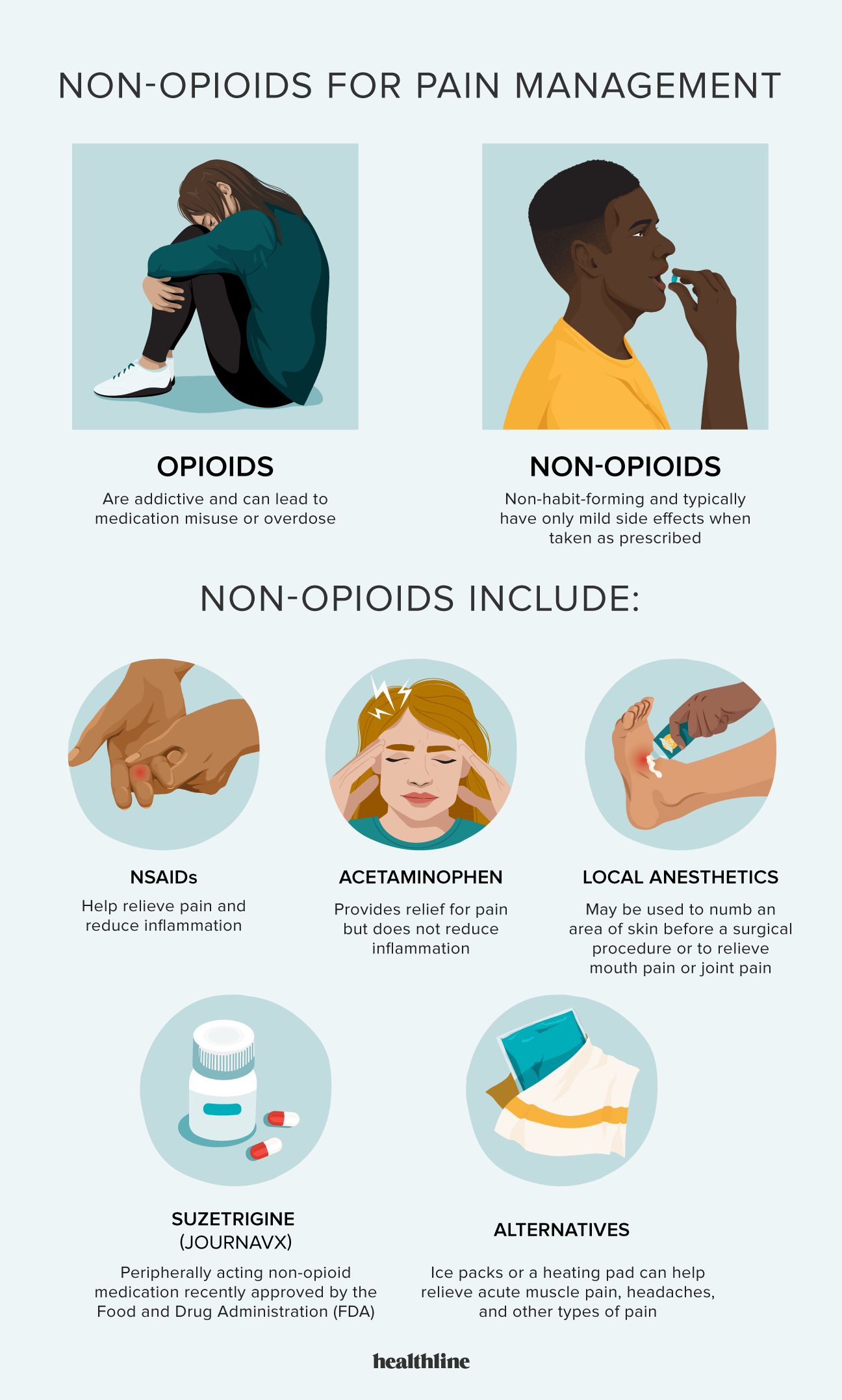There are many different medications to help with pain. Drugs in the non-opioid group are non-habit-forming and can address pain in various areas of the body.
Non-opioid pain medications provide relief from common causes of acute pain. These medications are less powerful than opioids, but they are also safer and easier to get. Many non-opioid pain medications are available to help with pain from various causes and in various areas of your body.
Opioids …
can be addictive and lead to medication misuse or overdose- often provide strong relief for various types of pain
- are available only by prescription
- may lose effectiveness over time
Non-opioids …
- are often available without a prescription
- can treat various conditions, such as arthritis pain, skin conditions, muscle aches, headaches, menstrual cramps, and postoperative pain
- are non-habit-forming and typically have only mild side effects when taken as prescribed
NSAIDs help relieve pain and reduce inflammation. They are effective for medical conditions like arthritis as well as injuries such as a sprained ankle. The following are some common examples of NSAIDs.
Ibuprofen
- a common over-the-counter or prescription-strength option to relieve pain caused by inflammation
- helps with common issues such as sore throat and muscle aches, as well as conditions like osteoarthritis and rheumatoid arthritis
Naproxen
- helps with pain resulting from inflammation
- available with or without a prescription
- may be prescribed for specific types of pain, including pain due to bursitis, tendonitis, gouty arthritis, or ankylosing spondylitis
Aspirin
- one of the oldest non-opioid pain relievers
- helps reduce inflammation and can also help prevent blood clotting
- may be used for cardiac-related chest pain, general pain, arthritis pain, or ankylosing spondylitis
- Acetaminophen provides relief for mild pain but does not reduce inflammation.
- Scientists
are not sure how it works to treat pain. - It’s one of the
most common non-opioid pain relievers.
- These medications work directly on inflammation by suppressing the immune system.
- They come in several forms, such as oral tablets, injections, and ointments.
- Doctors use them to treat various causes of acute pain.
- Examples include prednisone and hydrocortisone.
- Lidocaine is one of the
most common types of local anesthetic. - Local anesthetics may be used to numb an area of skin before a surgical procedure or to relieve mouth pain or joint pain.
- Doctors use lidocaine to treat mild neurological pain that is not pain due to inflammation.
- Lidocaine patches are used for pain management.
- Journavx is a peripherally acting non-opioid medication recently approved by the Food and Drug Administration (FDA).
- Doctors may prescribe it to treat moderate to severe pain.
- It’s available as a prescription in tablet form.
- Gentle exercise or movement: In some cases, gentle movement and activity, such as warming up stiff joints, can help reduce pain.
- Icing or heating: Using ice packs or a heating pad can help relieve acute muscle pain, headaches, and other types of pain.
- CBD oil: Some evidence, including a 2022 study, suggests that CBD oil can be effective for relieving acute joint pain. It may also help with other types of pain.
- Acupuncture: According to a 2017 review, acupuncture may help relieve chronic musculoskeletal pain and headaches.
- Capsaicin: Capsaicin, which is often found in patches and creams, can provide some topical pain relief for joint pain, muscle pain, and other types of pain.





